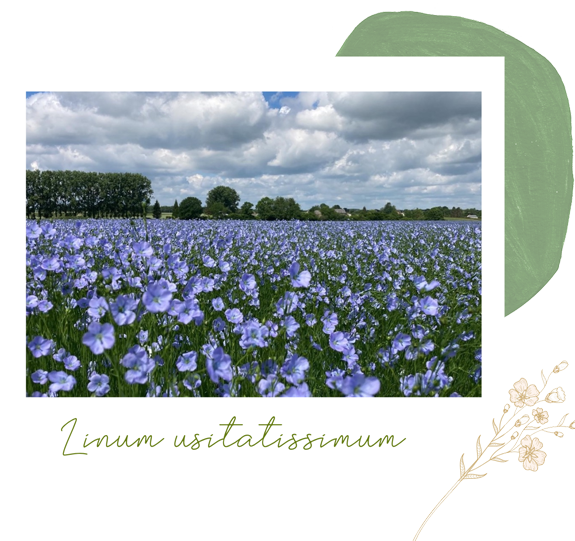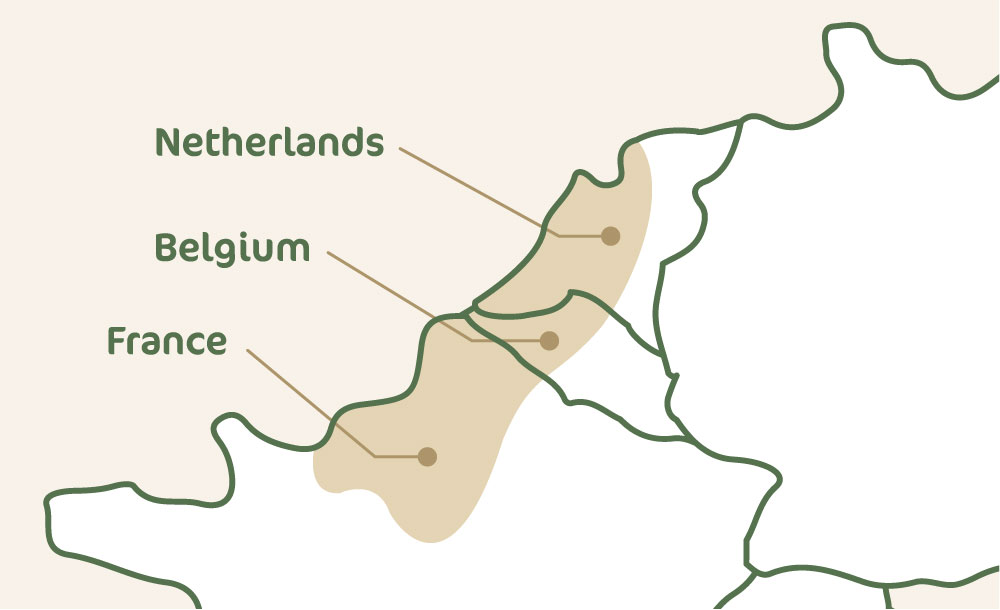All about flax
A natural and environmentally friendly fiber
Flax, a historic fiber
Family: Linaceae
Species: Linum usitatissimum
Flax was the first fiber material developed by man. The first traces date back to 36,000 BC in a cave in the Caucasus, where fragments of linen fiber were discovered.
Mummies wrapped in linen strips dating back to 6000 BC have been found. In Egypt, linen symbolized purity. Charlemagne contributed to the development of linen by enshrining it in his laws. According to him, every household must weave linen. Linen has endured through the years until the present day.


Flax, a fiber that can’t be outsourced
Flax is a plant fiber grown over a wide coastal strip from Caen (Normandy) to Amsterdam in the Netherlands, via Belgium.
The quality of flax is based on unique geo-climatic assets and unique expertise. This means that flax production cannot be relocated. Today, ¾ of the world’s flax production grows in Western Europe. France is the world leader.
Linen production stages
Sowing seeds between March and April. Flax plants mature after 100 days.
Flax plants are removed in mid-July and laid flat in the fields.
Retting is a crucial step for flax fibers. The straw is then harvested and baled.
The aim of scutching is to separate the various constituents of the flax stalks.
The flax is then prepared to be spun, the fibers will be divided in order to homogenize them.
The combed linen fibers are then blended to form ribbons: rovings.
Did you know?
Linoleum: a floor covering patented in 1863 by F. Walton. Homogeneous surface, seamless, watertight and easy to maintain. This is due to homogenized linseed oil, which replaces rubber.
Shroud: piece of cloth (originally linen) used to bury the dead.
Santo Lino: second Pope in history, this demon-hunter, successor to Saint Peter, lived during the reign of 5 emperors: Nero, Galba, Otto, Vitellius and Vespasian.
Crinoline: fabric skirt made of horsehair and flax, supported by a frame of overlaying metal hoops.
Flax gray: color that closely resemble flax flower.